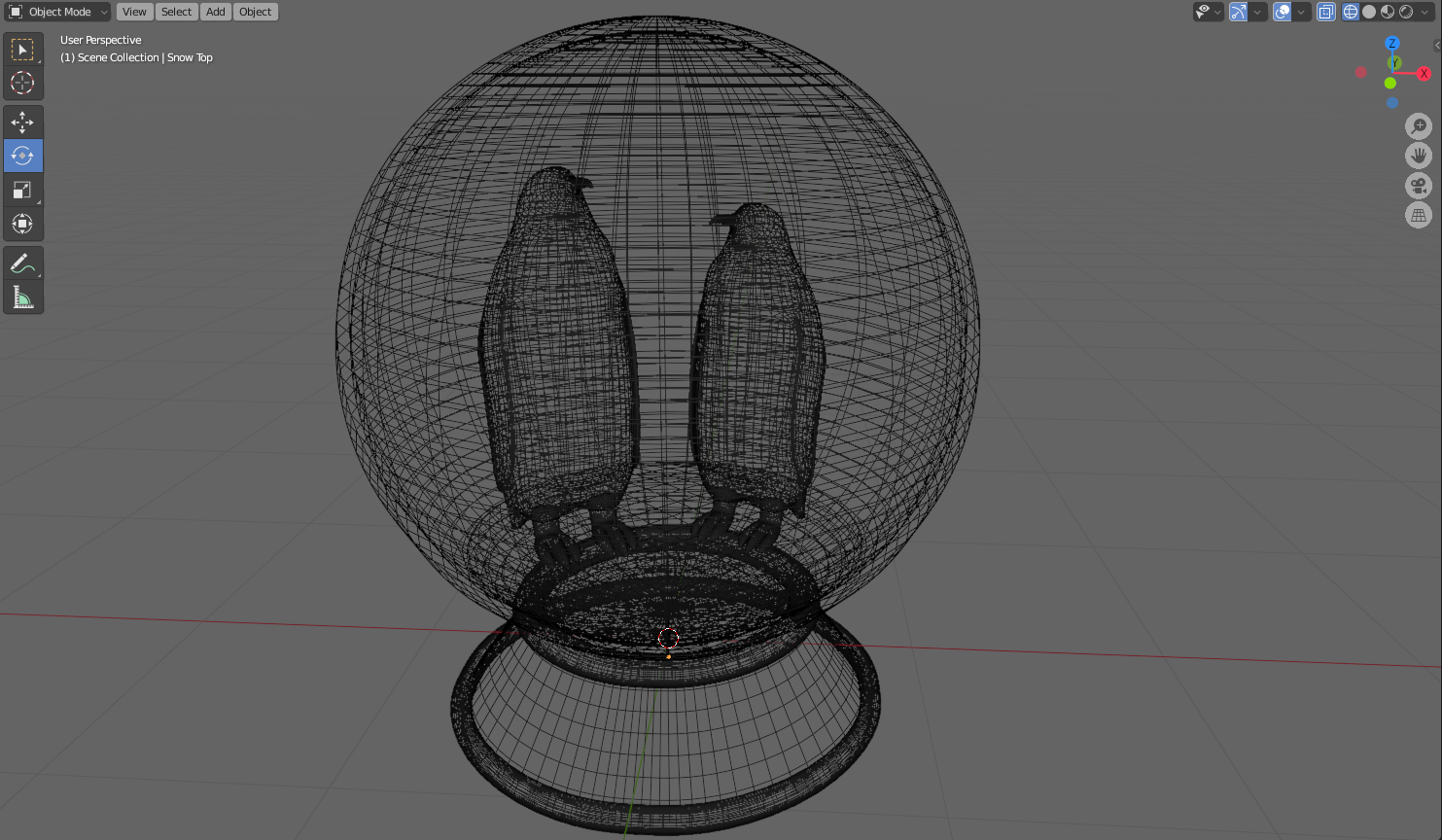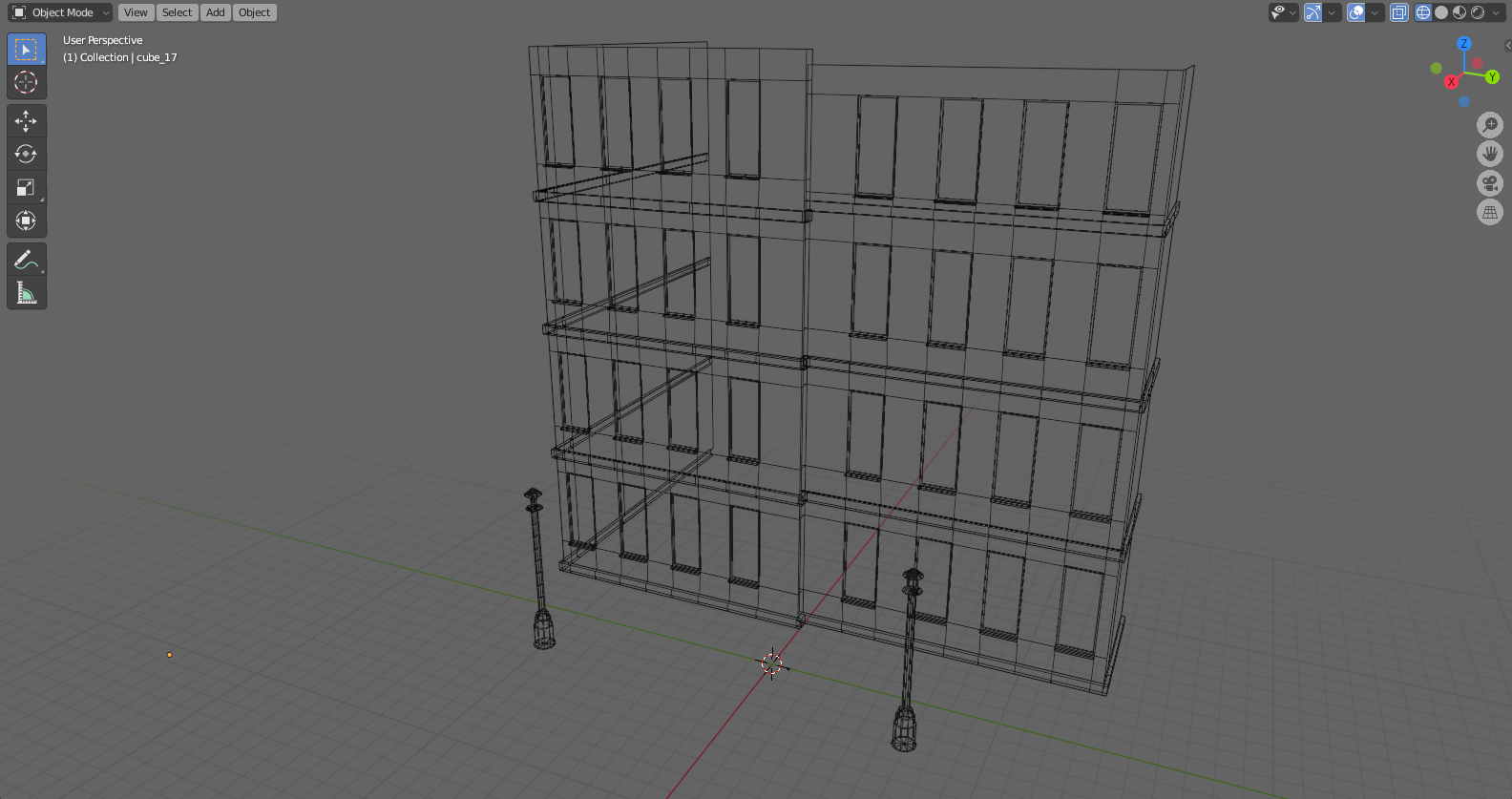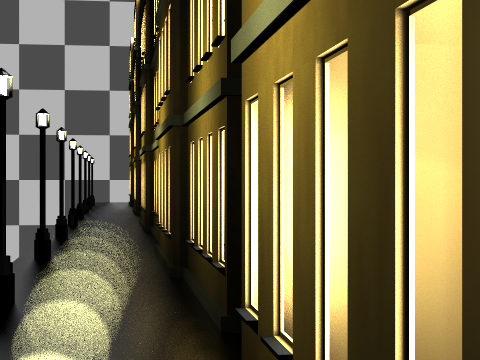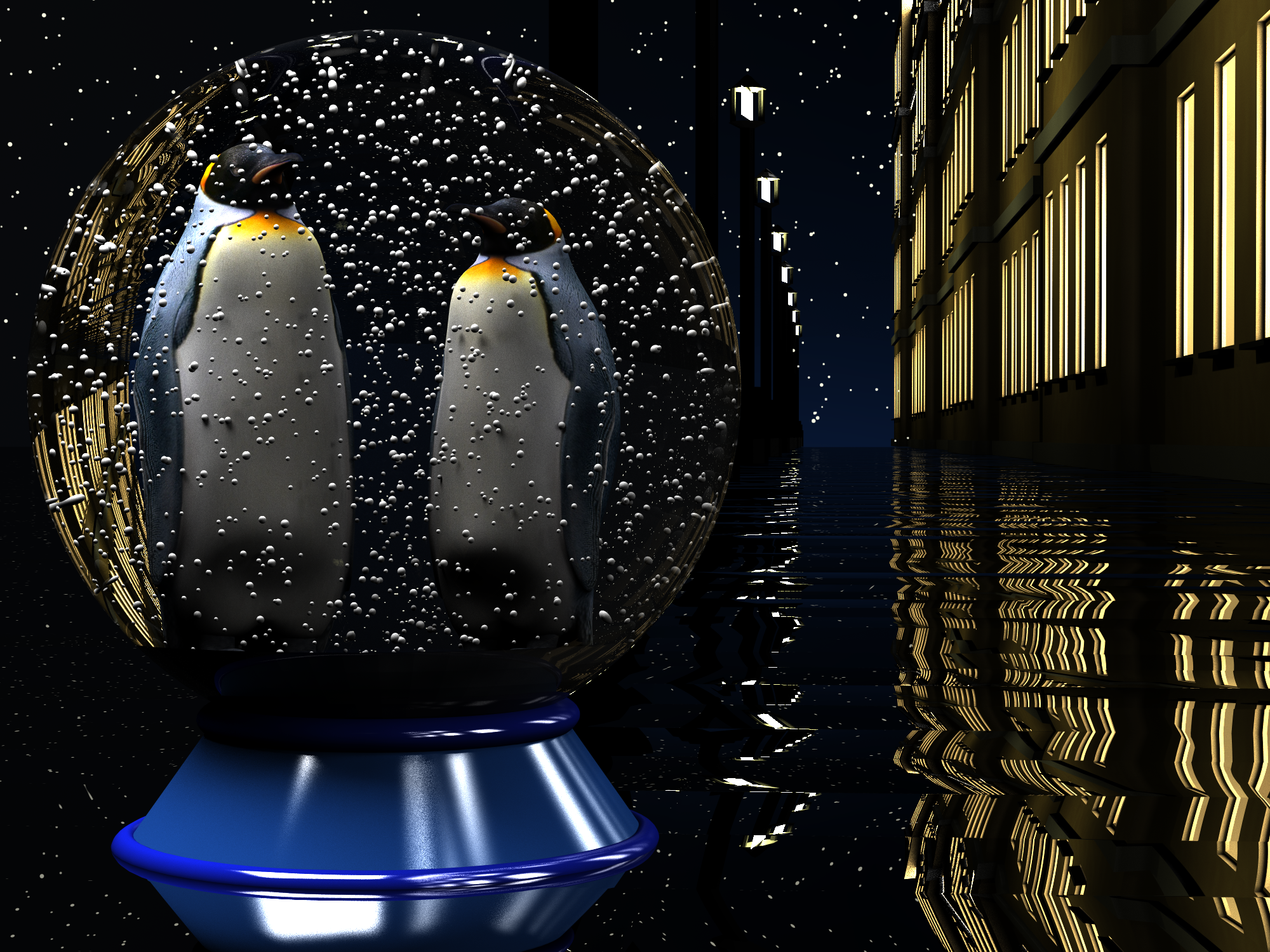Concept
The cuteness and clumsiness of penguins has always fascinated us (especially Nicolas). Since larger exemplars of these flightless birds inhabit colder regions, the climate change could lead to their extinction. This possible environmental damage is the topic of our scene. In this rather pessimistic vision of the future, global warming has lead to a rise of the sea level such that the cities are flooded. On a swamped sidewalk stands now a forgotten toy, a snow globe with two king penguins starring into the night.

.png)



.png)
.png)